
Tonbridge is a market town in Kent, England, on the River Medway, 4 miles (6 km) north of Royal Tunbridge Wells, 12 miles (19 km) south west of Maidstone and 29 miles (47 km) south east of London. In the administrative borough of Tonbridge and Malling, it had an estimated population of 41,293 in 2018.
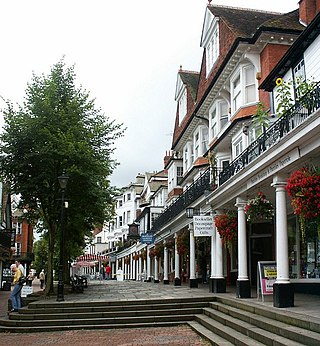
Royal Tunbridge Wells is a town in Kent, England, 30 miles southeast of central London. It lies close to the border with East Sussex on the northern edge of the High Weald, whose sandstone geology is exemplified by the rock formation High Rocks. The town was a spa in the Restoration and a fashionable resort in the mid-1700s under Beau Nash when the Pantiles, and its chalybeate spring, attracted visitors who wished to take the waters. Though its popularity as a spa town waned with the advent of sea bathing, the town still derives much of its income from tourism.

The Pantiles is a Georgian colonnade in the town of Royal Tunbridge Wells, Kent, England. Formerly known as "The Walks" and the (Royal) "Parade", it leads from the well that gave the town its name. The area, developed following the discovery of a chalybeate spring in 1606, has become a popular tourist-attraction.

Pembury is a large village in Kent, in the south east of England, with a population of 6,128 at the 2011 Census. It lies just to the north-east of Royal Tunbridge Wells.

Tunbridge Wells is a constituency in Kent represented in the House of Commons of the UK Parliament since 2005 by Greg Clark, a Conservative who served as Secretary of State for Business, Energy and Industrial Strategy from 2016 to 2019 and then as Secretary of State for Levelling Up, Housing and Communities in 2022 as part of a caretaker government led by outgoing Prime Minister Boris Johnson.

Groombridge is a village of about 1,600 people. It straddles the border between Kent and East Sussex, in England. The nearest large town is Royal Tunbridge Wells, about 4.5 miles (7.2 km) away by road.

Bidborough is a village and civil parish in the borough of Tunbridge Wells in Kent, England, north of Royal Tunbridge Wells and south of Tonbridge. According to the 2001 census it had a population of 958, increasing to 1,163 at the 2011 Census.

Frant is a village and civil parish in the Wealden District of East Sussex, England, on the Kentish border about three miles (5 km) south of Royal Tunbridge Wells.
Speldhurst is a village and civil parish in the borough of Tunbridge Wells in Kent, England. The parish is to the west of Tunbridge Wells: the village is 3 miles (5 km) west of the town.
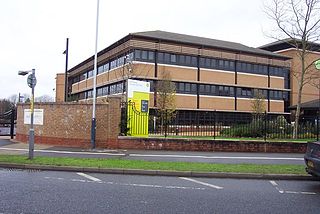
Hawkenbury is a small village area located in the south east of Royal Tunbridge Wells, Kent, England.
Rusthall is a village located approximately 2 miles to the west of the spa town of Tunbridge Wells in Kent. The village grew up around a large property called "Rusthall" located on Rusthall Common.
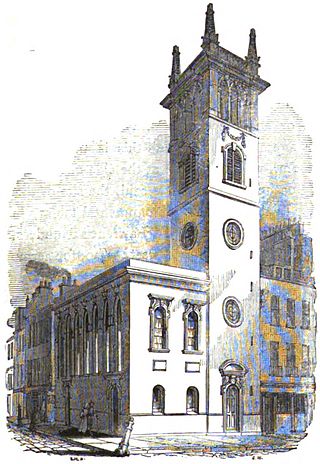
All Hallows Bread Street was a parish church in the Bread Street ward of the City of London, England. It stood on the east side of Bread Street, on the corner with Watling Street. First mentioned in the 13th century, the church was destroyed in the Great Fire of London in 1666. The church was rebuilt by the office of Sir Christopher Wren and demolished in 1876.
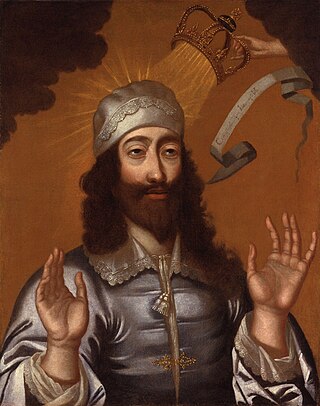
King Charles the Martyr, or Charles, King and Martyr, is a title of Charles I, who was King of England, Scotland and Ireland from 1625 until his execution on 30 January 1649. The title is used by high church Anglicans who regard Charles's execution as a martyrdom. His feast day in the Anglican calendar of saints is 30 January, the anniversary of his execution in 1649. The cult of Charles the Martyr was historically popular with Tories. The observance was one of several "state services" removed in 1859 from the Book of Common Prayer of the Church of England and the Church of Ireland. There remain some churches and parishes dedicated to Charles the Martyr, and his cult is maintained by some Anglo-Catholic societies, including the Society of King Charles the Martyr founded in 1894 and the Royal Martyr Church Union founded in 1906.

The Latheof Sutton-at-Hone historically included a large part of Kent: the present-day boroughs of Dartford, Bexley, Greenwich, Bromley, Lewisham, Sevenoaks District and small parts of the Borough of Tonbridge and Malling and Borough of Tunbridge Wells.
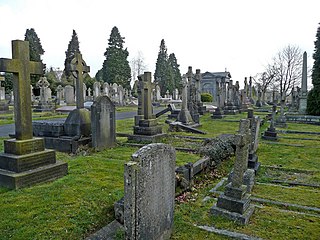
The Kent and Sussex Crematorium and Cemetery is a crematorium and cemetery located in Royal Tunbridge Wells in the county of Kent, England.

St Paul's Church is a Church of England parish church in Rusthall, Kent, England. It is a Grade II listed building.

Christ Church is a Church of England parish church in Kilndown, Kent, England. It was built in 1839 under the commission of William Beresford, 1st Viscount Beresford, and was substantially reordered in the early 1840s in accordance with the principles of the Cambridge Camden Society. Its layout and rich interior decoration, contributed by a range of major architects of the era, made it "a showcase" of the influential Society's ideas: John Betjeman described the church as "a museum of the Camden Society". It was severely damaged by bombing during the Second World War, but has been restored. It is a Grade I listed building.


















